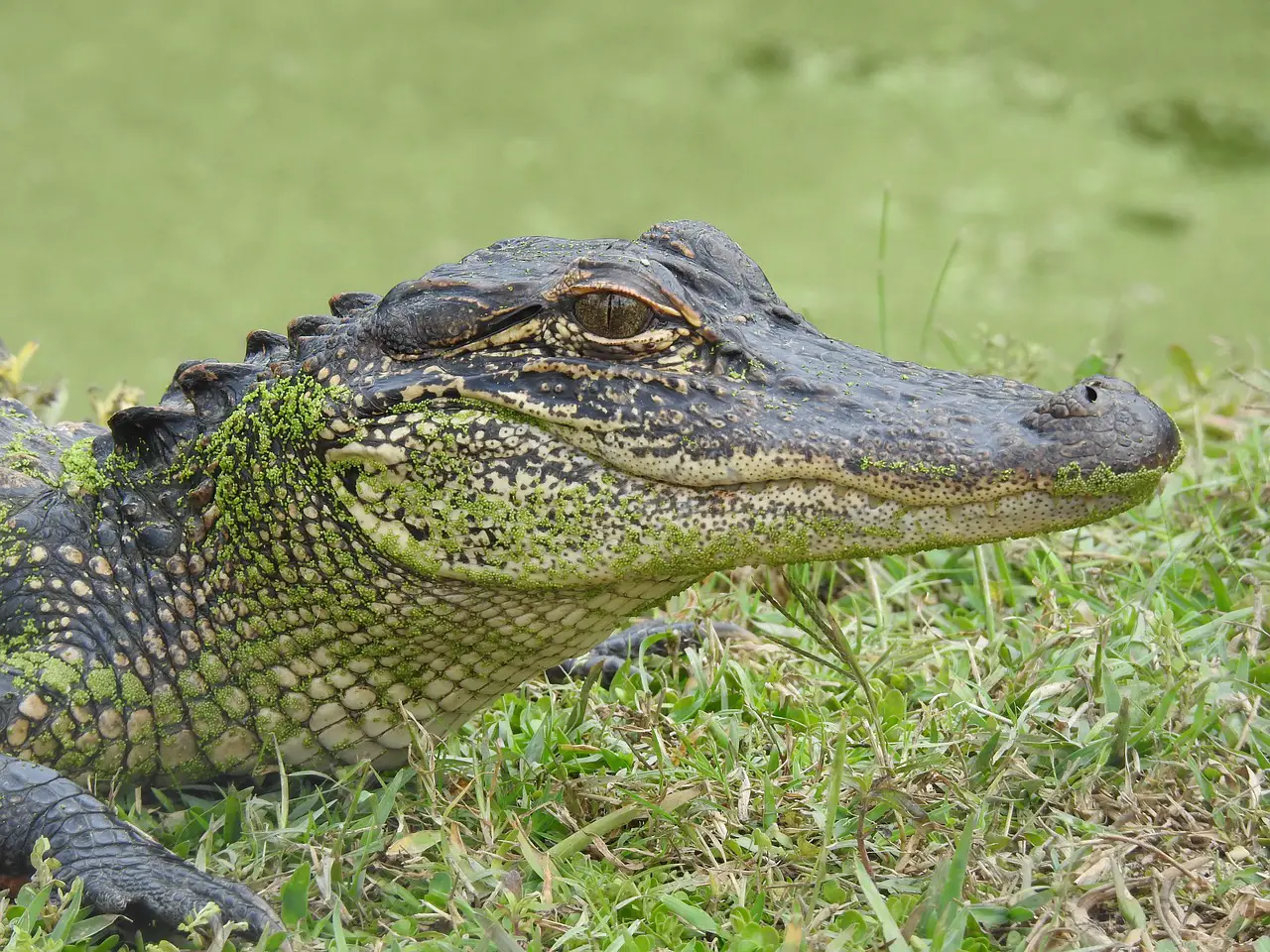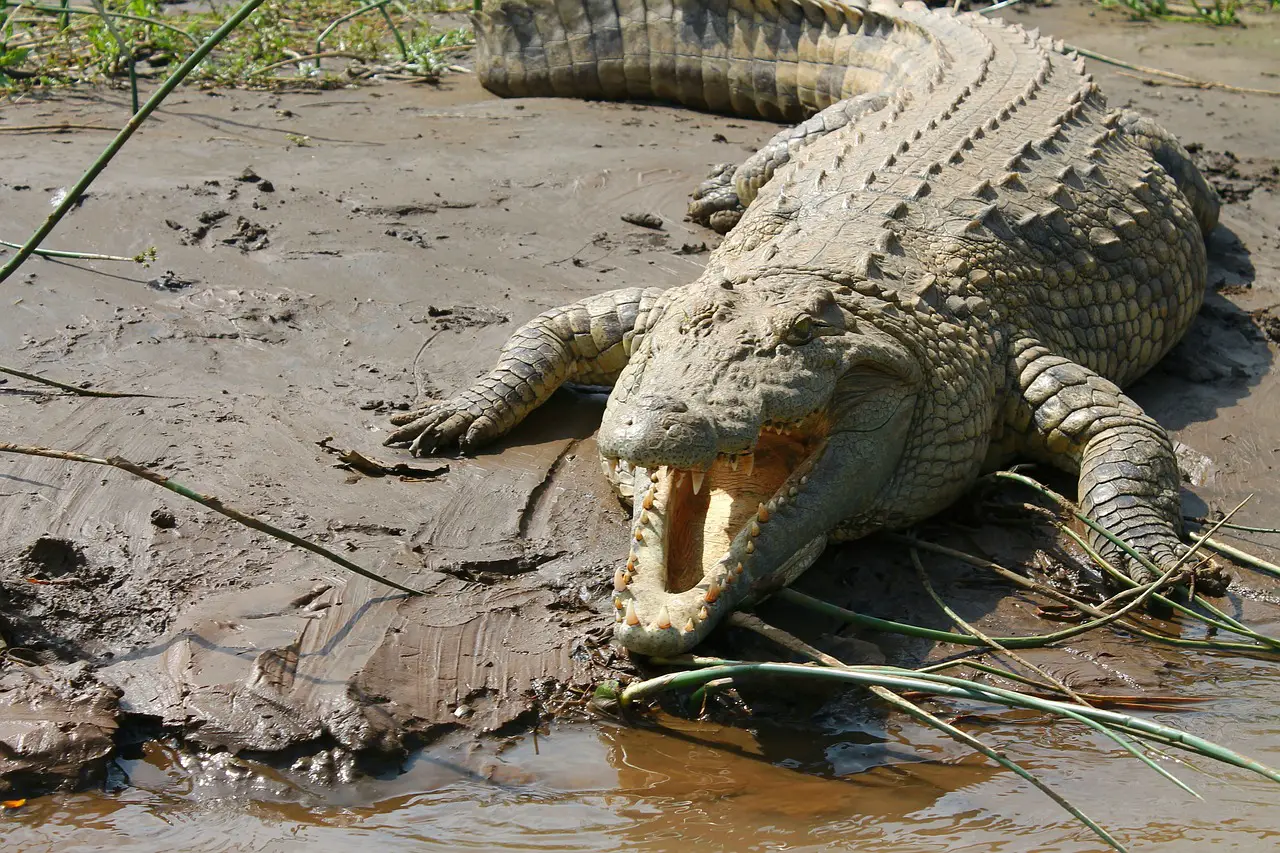What is the Difference Between an Alligator and Crocodile? Alligators and crocodiles are two reptilian species that often stir curiosity and fascination. While they share similarities, they are distinct in several aspects, ranging from their physical features to their behavior and habitat. In this article, we will dive into the world of alligators and crocodiles, exploring their differences and shedding light on their unique traits.
You may also want to read about big crocodiles.
Physical Differences
Alligators and crocodiles may seem similar at first glance, but upon closer inspection, there are noticeable physical differences that set them apart. Alligators have broader, U-shaped snouts, while crocodiles possess longer and narrower V-shaped snouts. Additionally, when their jaws are closed, alligators tend to exhibit a toothy grin with their upper teeth slightly visible, while crocodiles have interlocking teeth visible on both the upper and lower jaws.

The Difference Between an Alligator and Crocodile: Habitat and Distribution
Alligators
Alligators are primarily found in freshwater environments, inhabiting regions such as the southeastern United States and parts of China. They prefer swamps, marshes, and slow-moving rivers, creating burrows or constructing nests in close proximity to water sources.
Crocodiles
Crocodiles, on the other hand, are more versatile in their habitat choices. They inhabit both freshwater and saltwater environments, with a wider distribution across the globe. From Africa and Australia to the Americas and Asia, crocodiles can be found in various habitats, including rivers, lakes, estuaries, and even coastal regions.
The Difference Between an Alligator and Crocodile: Behavior and Diet
Both alligators and crocodiles are carnivorous predators, but their behavior and feeding habits differ to some extent. Alligators tend to be less aggressive and more tolerant of other alligators in their vicinity. They primarily feed on fish, turtles, and small mammals. Crocodiles, on the other hand, can display more aggressive behavior, especially when it comes to defending their territory or protecting their young. Their diet includes fish, reptiles, birds, and larger mammals.
Reproduction and Parental Care
When it comes to reproduction, alligators and crocodiles differ in their approach. Alligators construct nests on land, utilizing vegetation and mud to create a suitable environment for their eggs. The female alligator guards the nest and takes care of the eggs until they hatch. Crocodiles, however, build their nests near water bodies and use a mound-like structure made of vegetation and soil. Unlike alligators, female crocodiles are more aggressive during the nesting period and fiercely protect their nests. Once the crocodile eggs hatch, the mother assists in transporting the hatchlings to water.

Survival and Adaptations
Alligators and crocodiles have adapted over millions of years to thrive in their respective habitats. They possess powerful jaws, sharp teeth, and strong tails, which aid in swimming and capturing prey. Alligators have a unique feature known as a “spectacle,” a bony plate that covers the eye, providing protection and allowing them to see partially submerged while concealed. Crocodiles have salt glands on their tongues, enabling them to excrete excess salt from their bodies, making them more tolerant of saltwater environments.
Conservation Status
Both alligators and crocodiles have faced threats to their survival due to habitat loss, hunting, and pollution. However, conservation efforts have led to improved populations in some regions. Alligators have made a significant recovery, with some species no longer considered endangered. Crocodiles, on the other hand, still face challenges in various parts of the world, with some species listed as vulnerable or endangered.
Cultural Significance
Alligators and crocodiles hold cultural significance in many regions. They have been featured in folklore, myths, and stories, often representing power, danger, or wisdom. In some cultures, these reptiles are revered and considered symbols of fertility or protection. Their presence in ancient art and legends showcases their enduring influence on human culture throughout history.
Conclusion
In conclusion, while alligators and crocodiles share similarities as reptilian predators, there are distinct differences that set them apart. From their physical features and habitat preferences to their behavior, feeding habits, and cultural significance, each species has its own unique traits. Understanding these differences allows us to appreciate the diversity and marvel at the wonders of the natural world.
FAQs
- Are alligators and crocodiles dangerous to humans?
- While both species have the potential to be dangerous, they typically avoid humans unless provoked or threatened. It is important to exercise caution and respect their natural habitats.
- Can alligators and crocodiles interbreed?
- No, alligators and crocodiles are different species and cannot interbreed.
- Are alligators and crocodiles cold-blooded?
- Yes, like all reptiles, alligators and crocodiles are cold-blooded, meaning their body temperature fluctuates with the environment.
- How long can alligators and crocodiles live?
- Alligators can live up to 50-60 years in the wild, while crocodiles can live even longer, with some species known to surpass 70 years.
- Do alligators and crocodiles have any natural predators?
- Adult alligators and crocodiles have few natural predators, but their eggs and hatchlings are vulnerable to predation by birds, snakes, and larger mammals.
